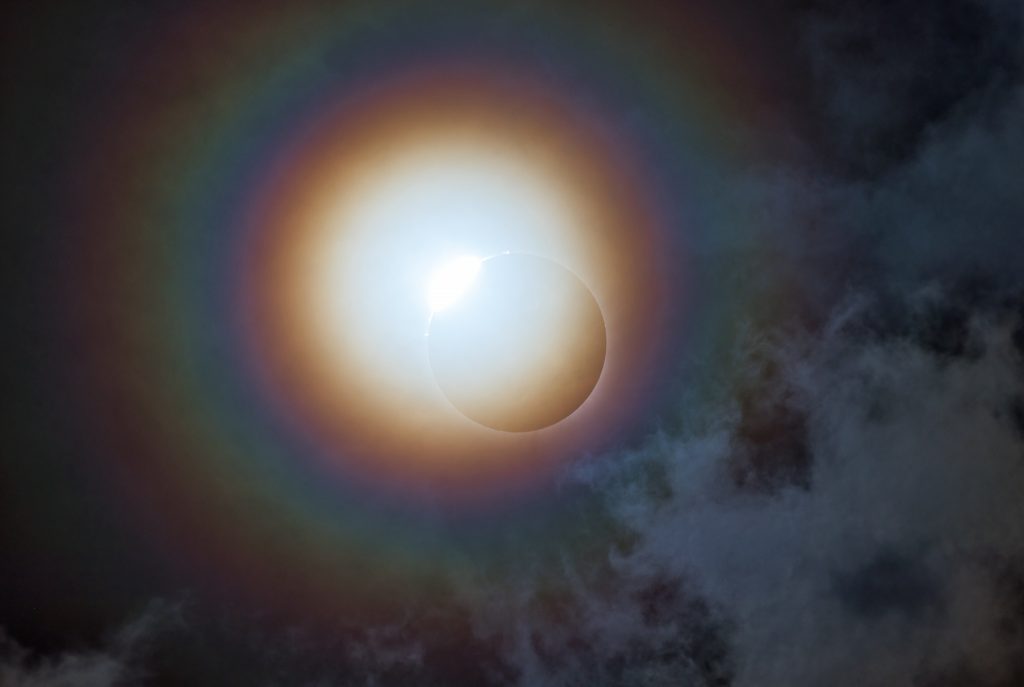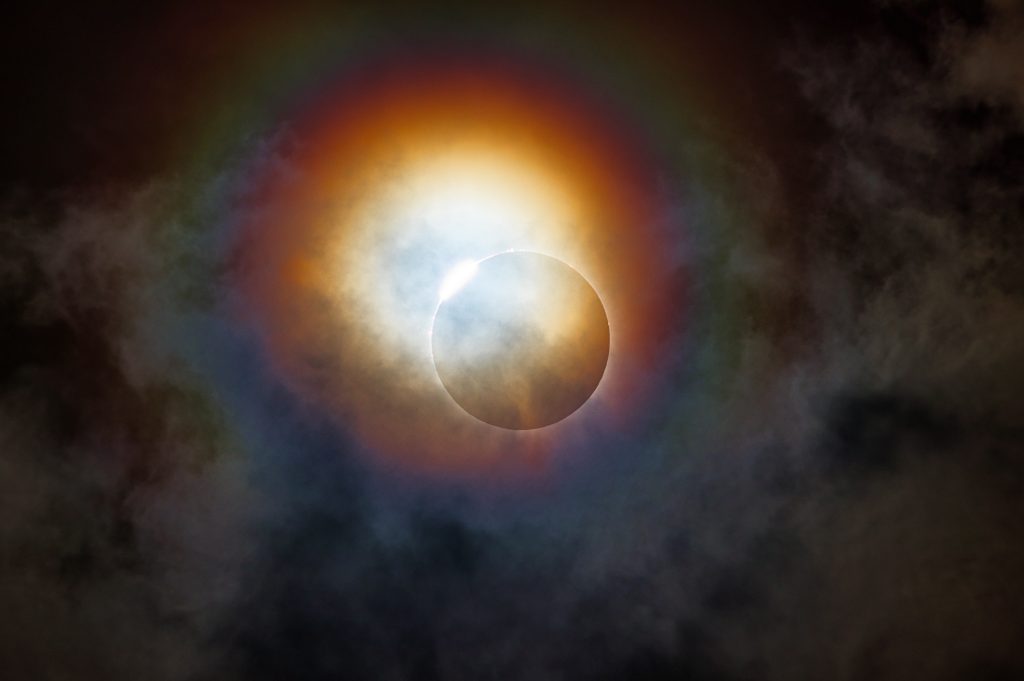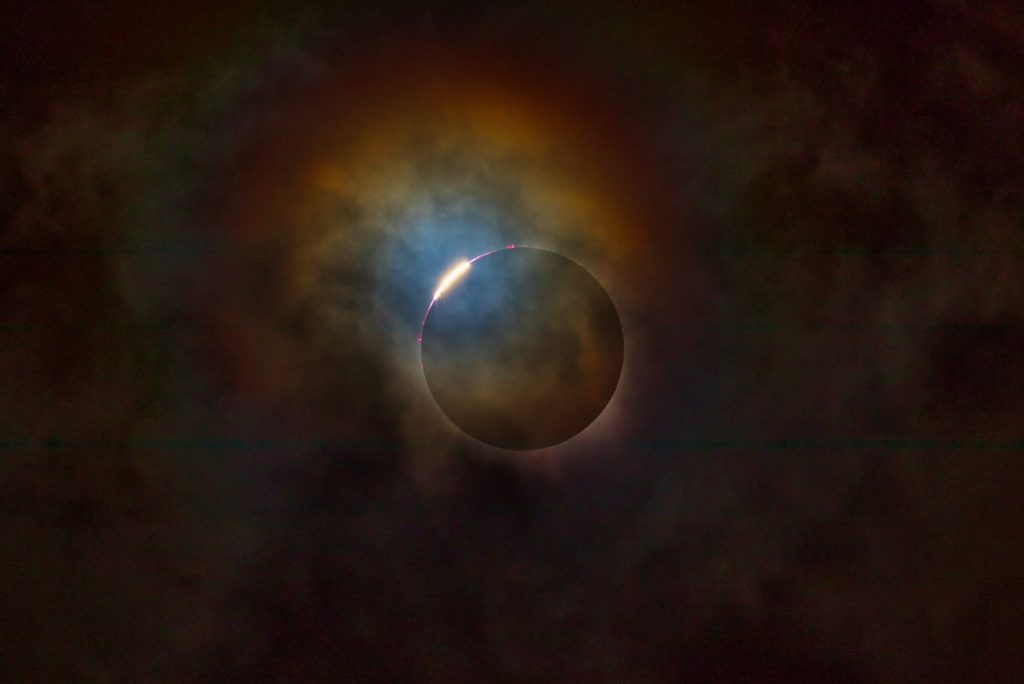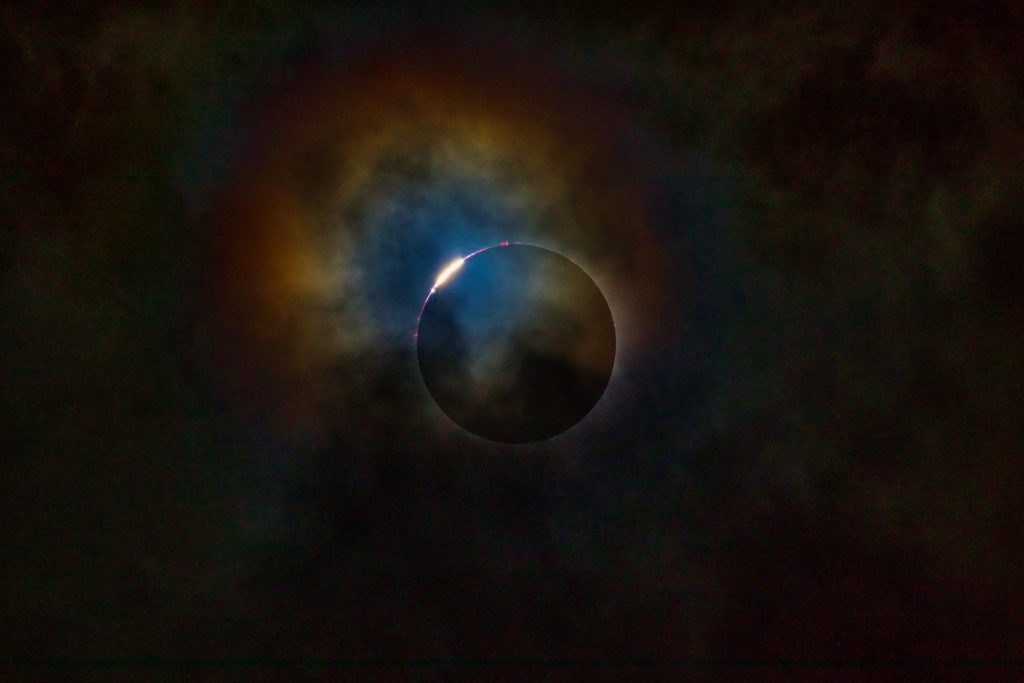After my 2017 Solar Eclipse experience, I had told myself that I would try to catch all future totalities in the US or Europe and April 2024 was the next one. I had chosen Texas a few months earlier because it statistically offered the best chance of sunshine. As luck would have it, when time came, Texas was the worst place to be, with high clouds covering the entire State and fast moving mid/low clouds in most places. I started off from Austin in the morning having marked 2 possible locations towards North and North East and when it was time to make the choice while driving, the weather radar showed a ranch near Gatesville, TX as having the best chance.
I set up my automated photography rig – I had my trusty Canon 800D, but I got a new super portable SharpStar 61EDPH-III triplet for the occasion along with a SkyWatcher AZ-GTe mount/tripod. A laptop running Eclipse Orchestrator was programmed to take about 200 photos by itself (most in brackets covering from 1/4000s to 1/2s). I’d be enjoying totality with my own eyes and binoculars. All I needed was for the clouds to not be in the way.
And they were not (completely) in the way; they sort of gave us a good opening for the start of the total phase and then for a significant portion of it. It was glorious, the dozen or so people around me were ecstatic (you can hear them in the video above), and having had my previous experience under clear skies, it was interesting to get something “new”, including an optical phenomenon called “corona”. Yes, it’s the same name as the Sun’s atmosphere, but it’s an effect caused by water droplets in the clouds refracting the light to produce a sort of rainbow around the sun. So most of my photos have 2 different coronas visible! Starting with the diamond ring shots:
Diamond Ring / Baily’s Beads
Processing was done with Luminar 4 and Photoshop, and I did push saturation / vibrance high to demonstrate the corona refraction effect. A thick cloud passed in front of my “proper” Baily’s beads shots, so I’ve got a couple that are between beads and diamond ring:
Totality Exposure Brackets
Overall, almost half my shots were behind clouds to dense to produce anything useful. From the rest, most of my brackets had moderately thick fast-moving clouds that made them impossible to HDR-merge. However, they made for dramatic single shots. Here is an example bracket sequence (from 1/50s to 0.3s, with clouds progressively blurry as the exposure increases):
Another one (this one 1/50s to 0.2s):
And one more (also 1/50s to 0.2s):
HDR Composite
Overall, the clouds (and possibly field rotation from using an Alt-Az mount) prevented both Photoshop and Nik HDR Efex from doing a successful HDR merge of my brackets. Aurora HDR was good at merging, but it produced a strange pattern/artefact (a bit like concentric squares) and cloudy brackets did not give good results otherwise. My best result was with my least cloudy bracket when blending the Aurora HDR result with the Photomatix Pro result (Photomatix was not as good at merging as Aurora though):
So Photomatix does not produce a lot of detail, but is used to reduce the artefacts from the (very detailed) Aurora HDR image.
Prominences
There was a particular bright and large prominence, easily visible with the naked eye (lower-right of the disk). It is best captured, a long with several more, a few seconds before the moon starts to make its “exit”:

End of Totality
The exiting diamond ring was behind much heavier clouds:

Takeaways
Total Solar eclipses are spectacular events, try to catch one if you haven’t already. If you want to take good photos/videos during totality, make sure you have a wholly automated rig so you can enjoy the actual eclipse with nothing more than a pair of binoculars.
My setup was much different from last time, the Equinox 80ED doublet was replaced by a smaller SharpStar triplet, which seems excellent both in performance and performance/price. However, my AZ-GTe computerized alt-az mount was much worse than the Sky Adventurer EQ tracker I used in 2017. With just one object to align with (the Sun), the tracking was not great, while the field rotation makes it harder to stack/merge exposures. However, I loved the AZ-GTe’s tripod, which is probably the sturdiest tripod I’d be able to fit in my suitcase. I think I’ll keep the tripod and get a Star Adventurer or similar to match it with.
See you in Spain for the August 2026 eclipse!


















